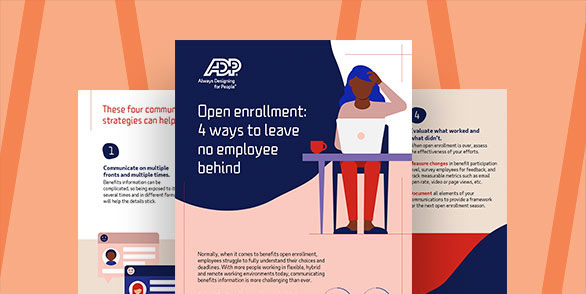Could free meals or gym membership really be the difference between winning or losing talent? It’s possible. Organizations that offer benefits above and beyond health insurance and retirement savings plans may have the upper hand on those that don’t. To stay competitive, employers should find out which employee perks and benefits are most attractive to their existing staff and potential candidates.
Table of Contents
What are employee perks?
Employee perks are non-financial incentives employers use as part of their talent management strategies. They help broaden a benefits portfolio so it stands out against the competition and appeals to a larger demographic base. Made popular by Silicon Valley tech firms, employee perks have since gained traction in other industries and with businesses of all sizes.
How are employee perks different from benefits?
Employers can freely choose whether they want to provide an employee perks program or not. The same cannot always be said of some traditional benefits. Depending on their business size and location, employers may be required to provide employees with health insurance, retirement savings plans, paid family medical leave and other benefits.
What’s more, employers will generally cover a portion of insurance premiums or contribute to their employees’ retirement savings if allowed by the plan. Employee perks and voluntary benefits, in contrast, are sometimes paid for entirely by employees, albeit at discounted group rates.
Types of employee perks
Organizations are getting increasingly creative with employee perks as they try to attract talent and create a better workplace culture. Options include but are not limited to the following list:
- Free meals or snacks
- Subsidized gym memberships
- Office fitness classes
- Wellness programs
- Learning and development opportunities
- Commuter benefits
- Flexible work arrangements
- Dry cleaning services
- Tuition reimbursement
- Discounts on personal insurance (home, auto, renters, etc.)
Benefits of company perks
Employee perks can be a differentiator in any industry. Employers who provide them show they are creative, forward thinking and care about their people. Consequently, they may be able to:
- Lower healthcare costs
- Attract and retain talent
- Improve employee engagement
- Increase productivity and performance
- Spur innovation
- Build employee relationships
How to choose employee perks
Perks are largely driven by employees’ personal needs, though other factors play a role in the decision process. Here are three ways to choose attractive company perks:
- Survey employees to find out which perks they want
Offering only the perks that employees will actually use helps improve utilization rates and vendor relations. - Let perks build upon one another
Some programs give rise to others. For example, if an employer offers a wellness program, it may make sense to eventually sponsor gym memberships. - Align perks to the business model
Effective perks encourage employees to live the company’s mission and vision, e.g., a travel company gives its employees a travel stipend.
Once they’ve rolled out employee perks, employers should evaluate them regularly and adjust as needed. In many cases, it may help to listen to employees and let their feedback drive change.
How to make perks more affordable
Employers can reduce the cost of perks by contacting local vendors and explaining how many employees they have and how often they plan on using the vendor’s service. If the group or frequency is large enough, the vendor may offer discounted rates. Employers can also ask nearby organizations if they would like to partner with the vendor to further drive down the price.
What perks should employers consider?
Employers should consider offering perks that will fulfill their goals. They may want to ask themselves the following questions:
- Am I looking for ways to promote a strong, positive culture?
- Can perks differentiate our healthy organization from competitors?
- Are perks a means of covering up existing issues within our organization?
Employers who answer yes to the last question must understand that perks are not a band-aid. While they can have a positive impact on an employer’s brand, they are not an effective branding strategy on their own.
Before rolling out employee perks, employer should thoroughly evaluate their organization, including its culture, reputation and total compensation packages. If the brand and compensation are already strong, then offering perks may be a way to improve reputation in competitive industries or regions.
Frequently asked questions about employee perks
What do perks mean in work?
Workplace perks supplement traditional or core benefits packages. Employers offer them to improve employee job satisfaction and attract new talent.
What is an employee perk example?
There are many types of employee perks, ranging from the commonplace to the truly unique. Subsidized gym membership is one that many employers use to help keep their employees healthy and productive.
What perks do employees value most?
According to some research studies, the perk employees most value is open communication with their managers. This finding shows that perks aren’t reserved for companies with deep pockets. Even simple, cost-free incentives can have a lasting impact.
Why are employee perks important?
Employee perks are important because they can help businesses with strong brand reputations differentiate themselves from competitors in tight talent markets. Such employers may be able to improve engagement, retention, productivity and more.
This article is intended to be used as a starting point in analyzing employee perks and is not a comprehensive resource of requirements. It offers practical information concerning the subject matter and is provided with the understanding that ADP is not rendering legal or tax advice or other professional services.





